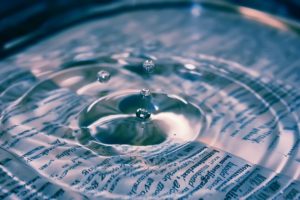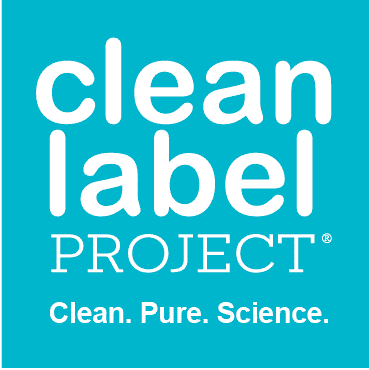Clean Label Project Sets the Record Straight

Conspiracy theories abound, but it’s hard not to notice that all the criticism is coming from the industry from which we just scientifically proved is selling products with industrial and environmental contaminants exceeding government limits. Clean Label Project sets the record straight.
From accusations of not being transparent with funding to not sharing raw data, today we saw yet another industry trade outlet looking to protect the industry status quo. Rather than improve ingredient quality and sourcing practices some entities prefer to suppress, hide, obfuscate, or otherwise attack Clean Label Project’s testing results instead of spending their time and energy addressing the underlying concerns- high levels of industrial and environmental contaminants in their products.
At the end of the day, the tactics of some members of industry are not new to Clean Label Project. A 30-second peruse of the Clean Label Project website will yield all the answers to the allegations mentioned 1) the Raw Data and 2) the sources of Clean Label Project funding- donations, grants, crowdfunding, Amazon Smiles beneficiary, Amazon affiliate status, and our certification program.
One aspect of the article that I did find interesting is the mention of “measurable” levels of lead. Let’s talk about measurable levels of lead. In fact, let’s talk about measurable levels of heavy metals like arsenic, cadmium, lead, and mercury and let’s talk about the fact that over 50% of the products tested exceeded government regulations of at least one these industrial and environmental contaminants. These media outlets would know this if they look at the raw data published on the Clean Label Project website, or even independently reach out to Clean Label Project to ask the question as opposed to using other industry trade publications as their source. It should be noted that for many of these industry trade publications that most, if not all, of their revenue is derived from the very brands that the Clean Label Project rates.
Clean Label Project has had numerous journalists visit the third party analytical chemistry testing laboratory to review the raw data, evaluate the chemistry lab itself, and to decide for themselves whether consumers have the right to know what’s in the products they buy and provide for their families. Health Ranger, Mike Adams, I personally invite you to take a field trip to visit us. We share a commitment to empowering consumers with the truth about product content. You should visit us, observe the testing, and view the results.
It’s also important to note that the high level of heavy metals found in protein powder is in no way new to the protein powder industry. This is not the first research that has shown high contaminant levels in such products. In fact, in 2010 Consumer Reports’ study1 and for the past 10 years, the protein powder industry has been receiving notifications from the California Office of Environmental Health Hazard Assessment about high levels of heavy metals. Want to see for yourself? Consumers, visit this website and put in the name of your favorite protein powder brand under “source/product”. You don’t need to take Clean Label Project’s word, but maybe you’ll trust the state of California government.
In an ideal world, every company would be thrilled to participate in Clean Label Project’s rating system. Clean Label Project empowers consumers with information and independent product evaluation based on science and data to select the best products on the market for their families. We are encouraged by the amount of the 5-star products on the market. These brands are sourcing high quality, clean, and nutritious ingredients! This transparency based on data can be a win for consumers and a win for high-quality brands.
We would hope that every company that received a poor rating from Clean Label Project would immediately start working to improve the quality of their products. When companies compete to improve the purity of their products, consumers win.
We understand that we do not live in an ideal world. However, Clean Label Project will not be silenced by the same brands who sell comfort and security in their marketing and have elevated levels of environmental and industrial contaminants in their products, especially when those products are targeted at consumers looking to only better their health and wellness. The time has come for brands to step up and take ownership for what is in their products- both good and bad. The best part about Clean Label Project’s benchmarked results, is that we base them on science and data, NOT opinion. Plus, if brands think we got it wrong, we encourage them to reach out to us.
Clean Label Project is a 501(c)(3) formed with the mission of raising awareness on the presence of dangerous environmental contaminants and toxins in everyday consumer products. Clean Label Project believes there is simply not enough information on the long-term effects of exposure to these contaminants and toxins—particularly given the concerning nature of the knowledge we do have and the trend toward reducing or eliminating altogether such contaminants as better information becomes available—to simply gloss over their presence in the food we eat and provide to our loved ones, our children and our pets. When it comes to contaminants and toxins, Clean Label Project believes that less is better than more and it is time for consumers, manufacturers, and regulators to engage in far more robust conversations about the safety of food and common consumer products. For instance, it is now widely accepted that there is no “safe” level of lead in products we consume. Again, you don’t have to take our word for it, the American Academy of Pediatrics2, the Centers of Disease Control3, the Environmental Protection Agency4 have said it. Just last week, the public health journal Lancet published a study that linked lead exposure to heart disease contributing to 400,000 deaths per year in America5. The primary cause of the protein powders industry government violations (Prop 65) is lead.
Some have accused the Clean Label Project of “scaremongering”. In the case of protein powders where over 50% of products exceed government regulations, the data in and of itself is scary. It’s about time that the protein powder industry takes a hard look at the contaminants levels in their products. As stated by Tunde Akinleye, a test program leader in Consumer Reports’ Food Safety Division, who reviewed the Clean Label Project protein powder data, “When you have a protein supplement that is very, very clean, that proves, to the companies with high levels of heavy metals, that it is possible to do better.6”
Jaclyn Bowen, MPH, MS
Executive Director
Clean Label Project
